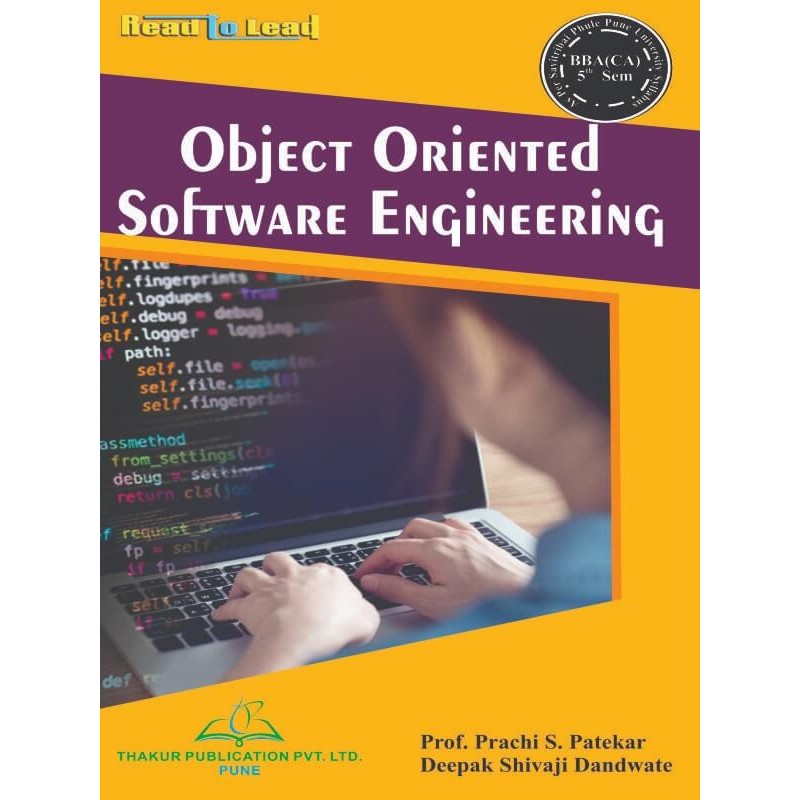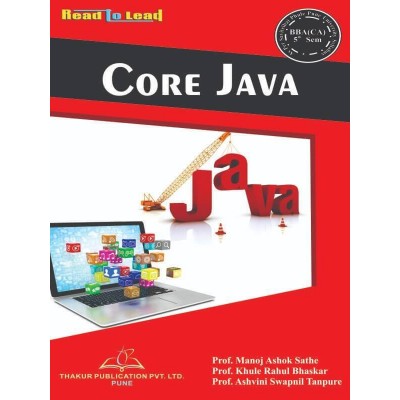Categories
- Pharmacy
-
Nursing
-
MBA
-
BBA
- U.P. State University
- Veer Bahadur Singh Purvanchal University, Jaunpur
- Chaudhary Charan Singh University, Meerut
- Dr. Bhimrao Ambedkar University, Agra
- Chhatrapati Shahu Ji Maharaj University, Kanpur
- Mahatma Jyotiba Phule Rohilkhand University, Bareilly
- Mahatma Gandhi Kashi Vidyapith, Varanasi
- Dr. Ram Manohar Lohia Avadh University, Ayodhya
- Deen Dayal Upadhyaya Gorakhpur University
- Prof. Rajendra Singh (Rajju Bhaiya) University, Prayagraj
-
BCA
- UP State Universities
- University of Pune
- I.K.Gujral Punjab Technical University (PTU)
- University of Rajasthan
- Rashtrasant Tukadoji Maharaj Nagpur University
- Uttar Pradesh NEP2020
- University of Rajasthan ,Jaipur (According to NEP-2020)
- BCCA (B. Com - Computer Science)
- Haryana
- West Bengal
- BBA (CA)
- PUNE BCA (Sci,Commerce)/B.Com (CA)
- Dr. A. P. J. Abdul Kalam Technical University, Lucknow ( AKTU )
- MCA
-
B Ed
- Lucknow University B.Ed Books
- Chaudhary Charan Singh University/Maa Shakambhari University, Saharanpur
- Dr Bhim Rao Ambedkar University, Agra
- Mahatma Gandhi Kashi Vidyapeeth, Varanasi
- Chhatrapati Shahu Ji Maharaj University
- Prof. Rajendra Singh (Rajju Bhaiya) University, Prayagraj (PRSU)
- Mahatma Jyotiba Phule Rohilkhand University(Mjpru), Bareilly
- Dr. Ram Manohar Lohia Avadh University, Ayodhya
- Bundelkhand University, Jhansi
- B.A,B.ed
- B.Sc, B.ed
- Deen Dayal Upadhyaya Gorakhpur University
- Veer Bahadur Purvanchal University (VBPU)
- Maharaja Suhel Dev State University ,Azamgarh (MSDSU)
- Raja Mahendra Pratap Singh State University, Aligarh (RMPSSU)
- Barkatullah Vishwavidyalaya (Bhopal)
- Jiwaji University (Gwalior)
- Vikram University (Ujjain)
- Dr. Harisingh Gour University (Sagar)
- Devi Ahilya Vishwavidyalaya (Indore)
- Rani Durgavati Vishwavidyalaya (Jabalpur)
- Awadhesh Pratap Singh University (Rewa)
- Maharaja Chhatrasal Bundelkhand University (Chhatarpur)
- D. EL. ED
- TET
-
B Com
-
B Sc
- B.Sc. U.P. State Universities Common Syllabus NEP
- Veer Bahadur Singh Purvanchal University, Jaunpur
- University of Lucknow
- Chaudhary Charan Singh University, Meerut
- Madhya Pradesh
- Chhatrapati Shahu Ji Maharaj University, Kanpur
- Dr. Bhimrao Ambedkar University, Agra
- Mahatma Gandhi Kashi Vidyapith, Varanasi
- DEEN DAYAL UPADHYAYA GORAKHPUR UNIVERSITY
- Prof. Rajendra Singh (Rajju Bhaiya) University, Prayagraj
- Dr. Ram Manohar Lohia Avadh University, Ayodhya
- Mahatma Jyotiba Phule Rohilkhand University, Bareilly
- Uttarakhand State Universities
- B.Sc. Bihar Universities Common Syllabus NEP
- University of Rajasthan (Jaipur)
- Haryana
-
Bachelor of Arts [B.A.]
- B.A. Of U.P. State Universities Common Syllabus NEP
- Veer Bahadur Singh Purvanchal University, Jaunpur
- University of Lucknow
- Chaudhary Charan Singh University, Meerut
- Chhatrapati Shahu Ji Maharaj University, Kanpur
- Dr. Bhimrao Ambedkar University, Agra
- Mahatma Gandhi Kashi Vidyapith, Varanasi
- Deen Dayal Upadhyaya Gorakhpur University
- Prof. Rajendra Singh (Rajju Bhaiya) University, Prayagraj
- Dr. Ram Manohar Lohia Avadh University, Ayodhya
- Mahatma Jyotiba Phule Rohilkhand University, Bareilly
- Madhya Pradesh
- Uttarakhand
- Bihar
- University of Rajasthan (Jaipur Syllabus as Per NEP2020)
- Haryana NEP-2020
- B Tech
- LLB
- SWA Education
Object Oriented Software Engineering

ISBN- 978-93-5480-084-9
AUTHORS- Prof. Prachi S. Patekar, Mr. Deepak Shivaji Dandwate
₹180.00
Tax excluded
ISBN- 978-93-5480-084-9
AUTHORS- Prof. Prachi S. Patekar, Mr. Deepak Shivaji Dandwate
Syllabus
OBJECT ORIENTED SOFTWARE ENGINEERING
(Course Code: CA-502)
|
Chapter |
Topic |
No of lectures |
|
1 |
Introduction and basics of Software Modelling 1.1 Software Life Cycle Models (Revision of SE) 1.2 System Concepts 1.3 Project Organization 1.4 Communication in Project Management 1.5 Risk management in Project Management |
(04) |
|
2 |
SRS Documentation 2.1 SRS Specification 2.2 Requirement Elicitation 2.3 Business Engineering |
(04) |
|
3 |
Introduction to UML 3.1 Concept of UML 3.2 Advantages of UML |
(02) |
|
4 |
Object Oriented Concepts and Principles 4.1 What is Object Orientation? - Introduction , Object , Classes and Instance , Polymorphism, Inheritance 4.2 Object Oriented System Development- Introduction, Function/Data Methods (With Visibility), Object Oriented Analysis, Object Oriented Construction 4.3 Identifying the Elements of an Object Model 4.4 Identifying Classes and Objects 4.5 Specifying the Attributes (With Visibility) 4.6 Defining Operations 4.7 Finalizing the Object Definition |
(04) |
|
5 |
Structural Modeling 5.1 Classes 5.2 Relationship 5.3 Common Mechanism 5.4 Class Diagram (Minimum three examples should be covered) 5.5 Advanced Classes 5.6 Advanced Relationship 5.7 Interface 5.8 Types and Roles 5.9 Packages 5.10 Object Diagram (Minimum three examples should be covered) |
(10) |
|
6 |
Basic Behavioural Modeling 6.1 Interactions 6.2 Use Cases and Use Case Diagram with stereo types (Minimum three examples should be covered) 6.3 Interaction Diagram (Minimum two examples should be covered) 6.4 Sequence Diagram (Minimum two examples should be covered) 6.5 Activity Diagram (Minimum two examples should be covered) 6.6 State Chart Diagram (Minimum two examples should be covered) |
(10) |
|
7 |
Architectural Modelling 7.1 Component 7.2 Components Diagram (Minimum two examples should be covered) 7.3 Deployment Diagram (Minimum two examples should be covered) 7.4 Collaboration Diagram (Minimum two examples should be covered) |
(06) |
|
8 |
Object Oriented Analysis 8.1 Iterative Development and the Rational Unified Process 8.2 Inception 8.3 Understanding Requirements 8.4 Use Case Model From Inception to Elaboration 8.5 Elaboration |
(04) |
|
9 |
Object Oriented Design 9.1 The Booch Method, The Coad and Yourdon Method and Jacobson Method and Raumbaugh Method 9.2 The Generic Components of the OO Design Model 9.3 The System Design Process - Partitioning the Analysis Model, Concurrency and Sub System Allocation, Task Management Component, The Data Management Component, The Resource Management Component, Inter Sub System Communication |
(04) |
SPPU2021/ BBA(CA)/5/02
48 Items
New
3 other products in the same category:
Comments (0)
No customer reviews for the moment.
Your review appreciation cannot be sent
Report comment
Are you sure that you want to report this comment?
Report sent
Your report has been submitted and will be considered by a moderator.
Your report cannot be sent
Write your review
Review sent
Your comment has been submitted and will be available once approved by a moderator.
Your review cannot be sent
Customers who bought this product also bought:
Core Java
Price
₹175.00
ISBN- 978-93-5480-063-4
AUTHORS- Prof. Manoj Ashok Sathe, Prof. Khule Rahul Bhaskar, Prof. Ashvini Swapnil, Tanpure
Python
Price
₹145.00
ISBN-978-93-5480-076-4
AUTHORS-Prof. Dr. Moon Moon Paithankar, Patil Yogesh Vijay, Prof. Mayuri Padhye
Cyber Security
Price
₹155.00
ISBN- 978-93-5480-068-9
AUTHORS- Nutan Prakash Joshi, Ms. Manishaben Jaiswal, Prof. Dhananjay Murlidhar Wagh











